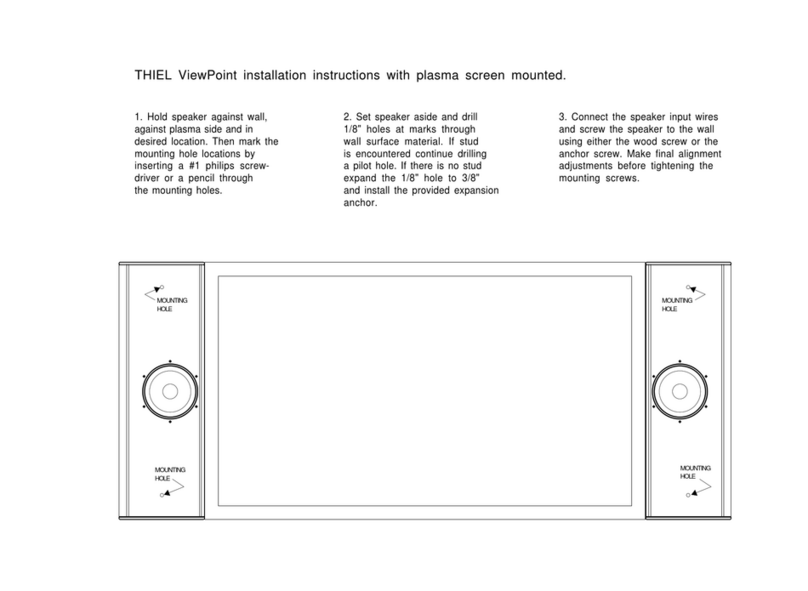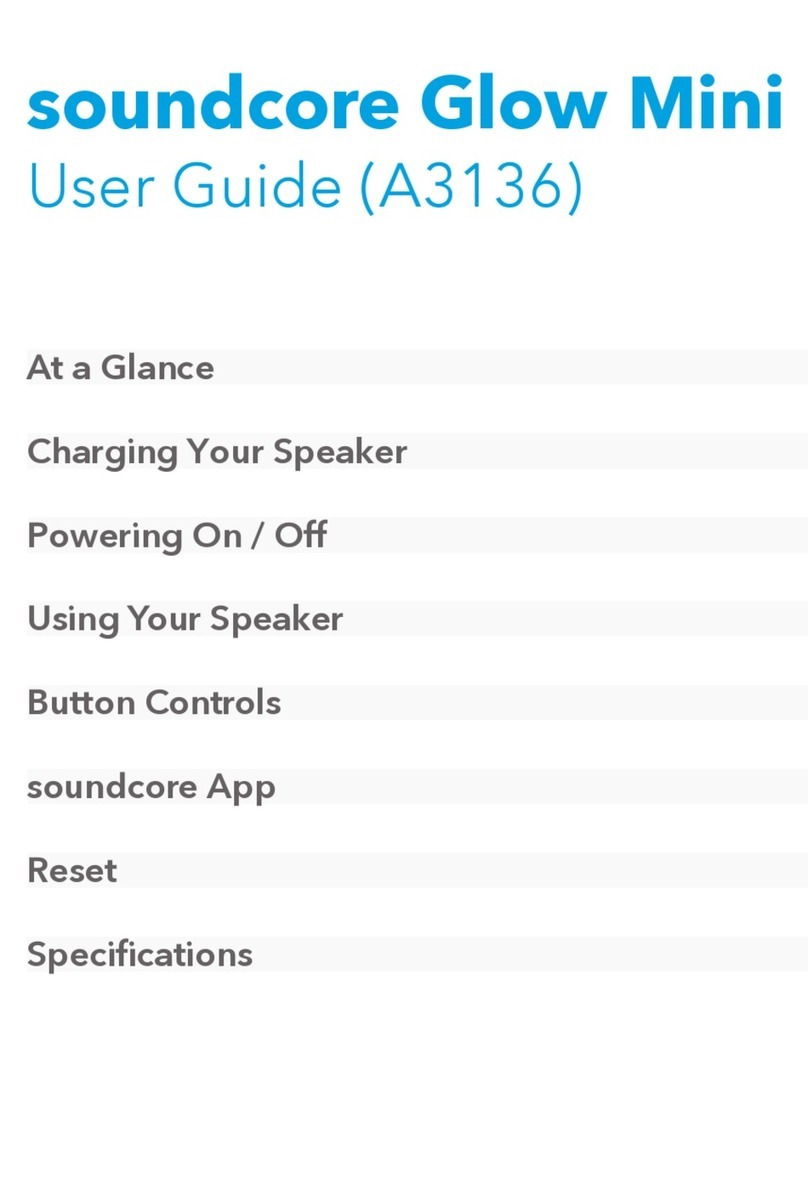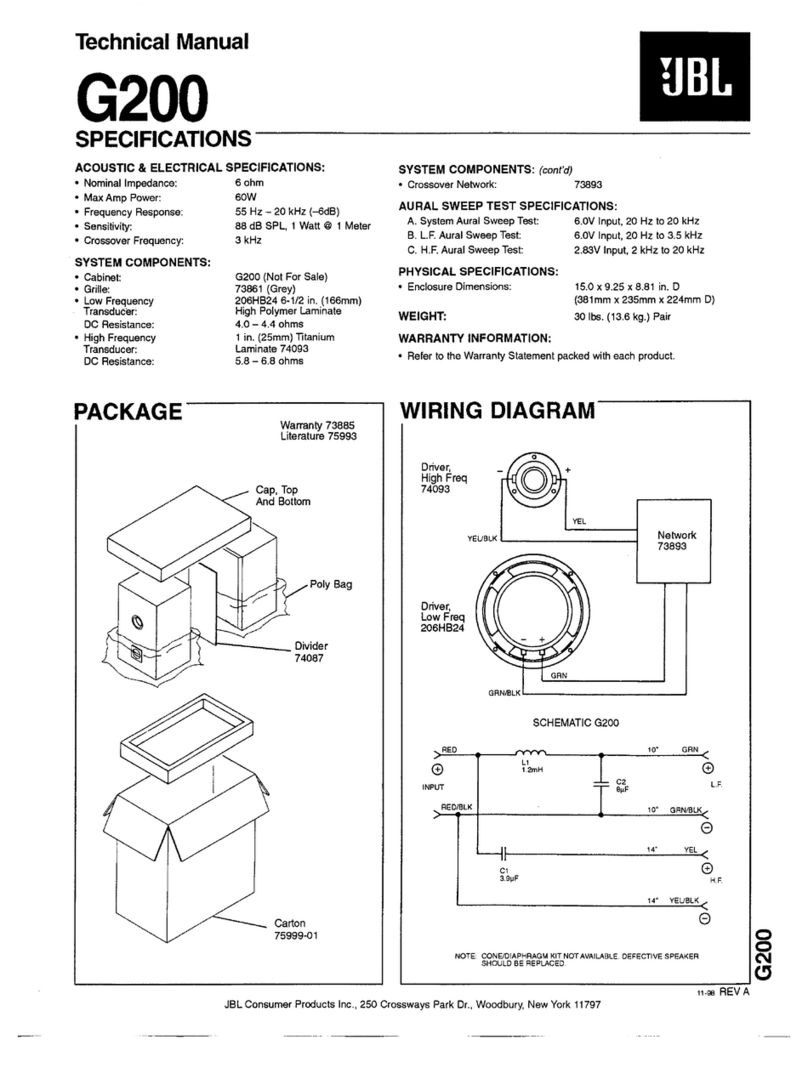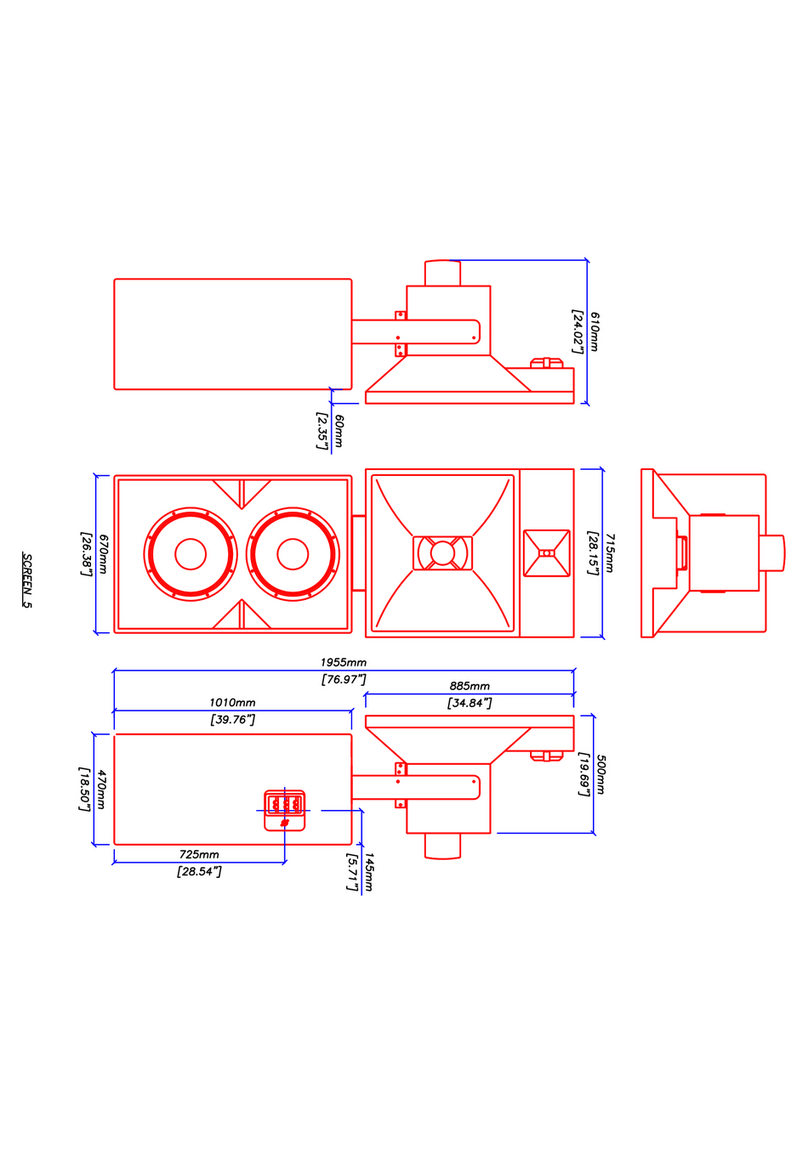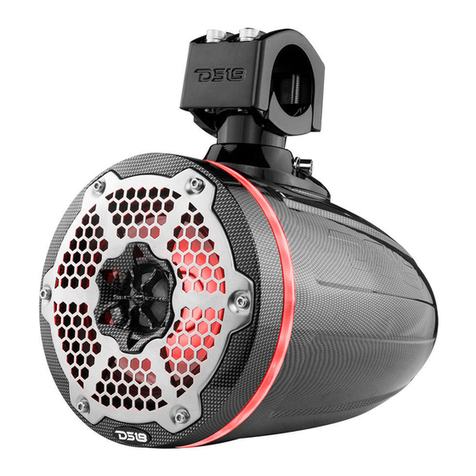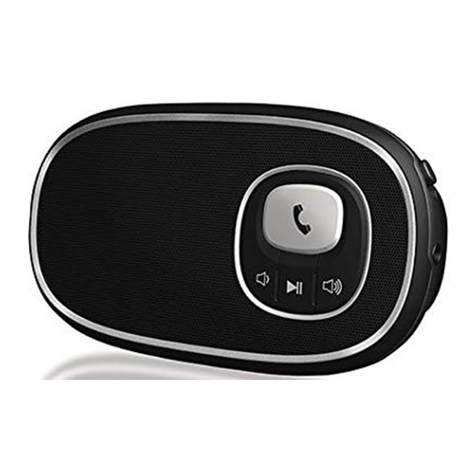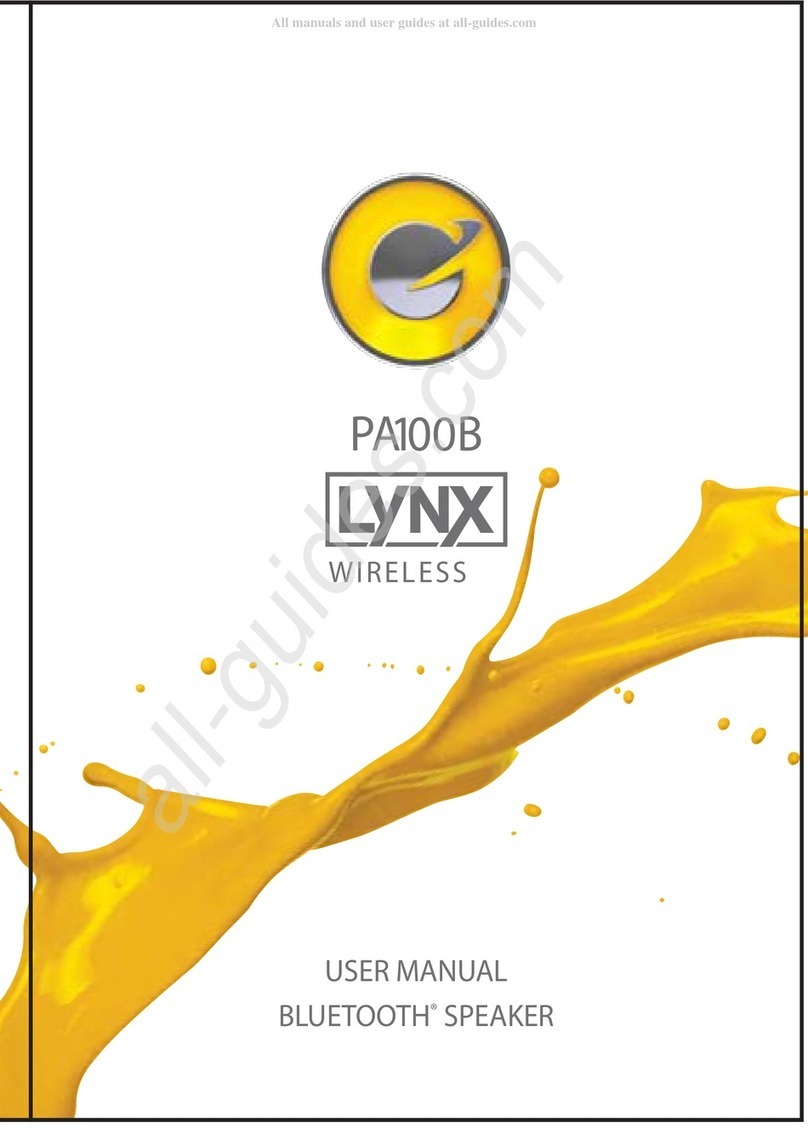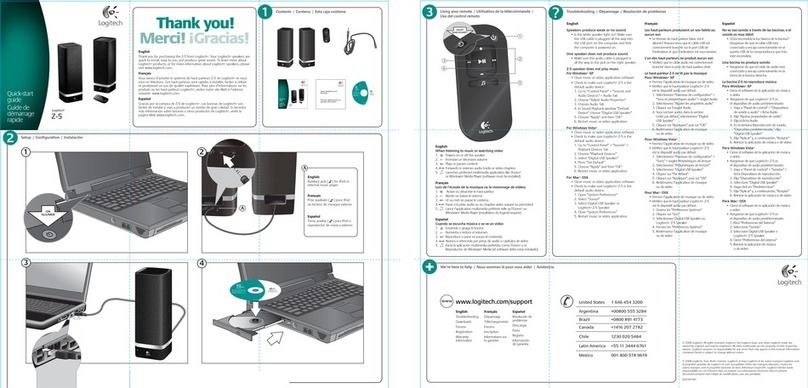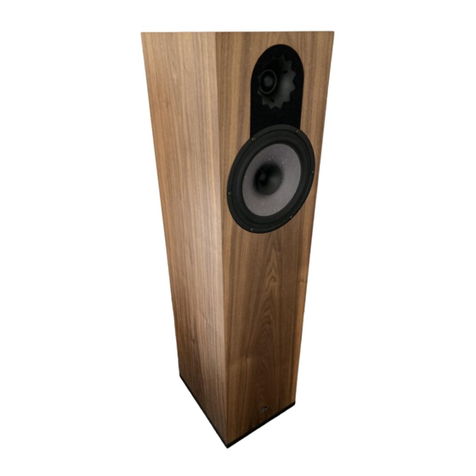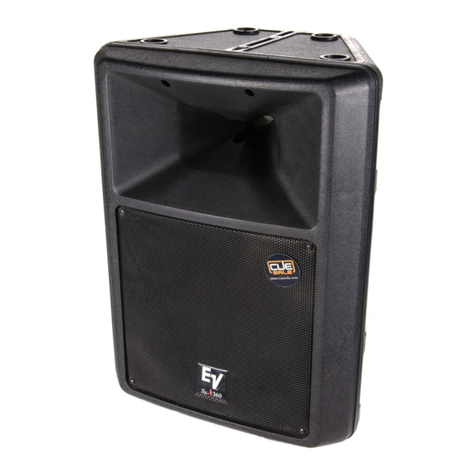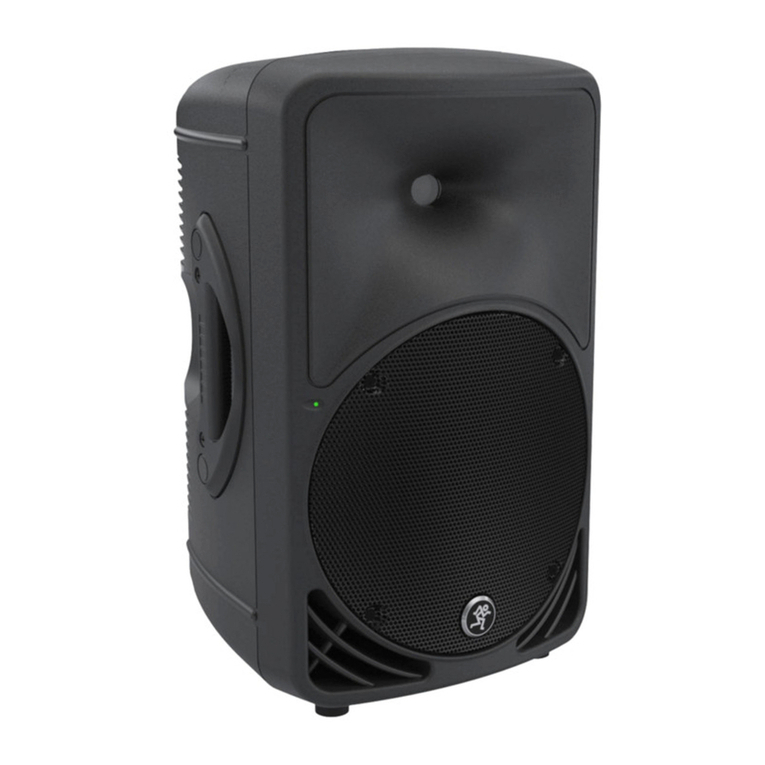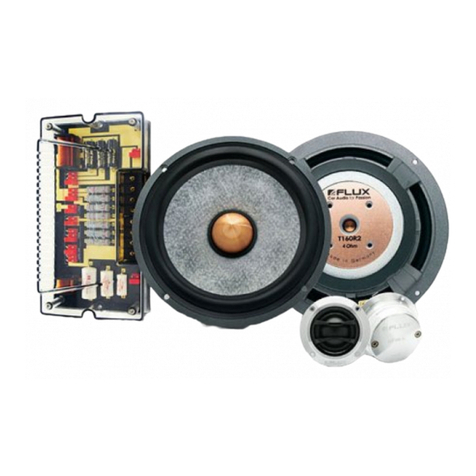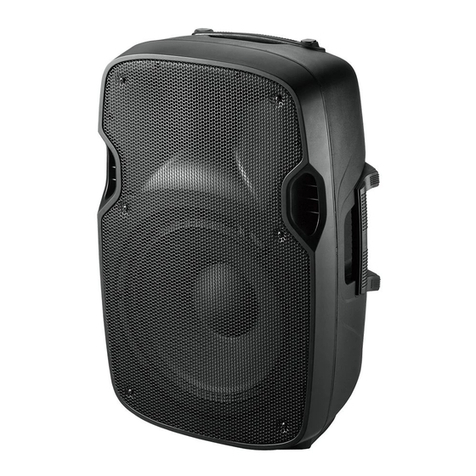Thiel PowerPoint 1.2 User manual

THIEL POWERPOINT SPECIFICATIONS
Bandwidth (-3 dB)
Amplitude response
Phase response
Sensitivity
Impedance
Recommended Power
Size (W x D x H)
Weight
Driver Complement:
Woofer
6.5" (5.1" radiating area) with anodized aluminum cone, cast frame, 1.7"
dia voice coil. Underhung coil (short coil/ long gap) motor system. Linear
travel 3/16" pk-pk, 3 in3linear displacement. 7.5 oz. neodymium magnet.
Copper pole sleeve. Made by THIEL.
Tweeter
1" (1.2" radiating area) with anodized aluminum dome. Aluminum coil.
Underhung coil (short coil/long gap) motor system. Linear travel 1/8" pk-pk.
Powered by 5 neodymium magnets weighing 1.7 oz. Copper pole sleeve.
Ferrofluid. Coincident with woofer. Made by THIEL.
75 Hz - 20 kHz
75 Hz - 20 KHz ±3 dB
minimum ±10°
89 dB @ 2.8 v-1m
4Ω, 3Ωminimum
30-200 watts
19.75 x 12.5 x 5.5 inches
10 lb
Supplemental
Technical Information
for model
THIEL PowerPoint™
Coherent Source
®Loudspeaker
This paper contains only information specific to the PowerPoint speaker
system. It is intended to supplement the general technical information paper
which explains our engineering philosophy, goals and techniques.
1/00

Time coherent topology
An important design goal for the PowerPoint which is not
shared with our floor-standing products is placement flexibility.
The requirement that the speaker provide time coherence while
placed in any orientation and at any height necessitates that the
speaker’s drivers be placed symmetrically both horizontally and
vertically and, therefore, that it use either coincident or
D’Appolito driver configuration. The PowerPoint uses
coincident/coaxial mounting of a very high output 1" tweeter and
a high output 61/2" woofer.
Two-way speaker positioned on its side
causes the sound from the drivers to reach
the off-axis listener at different times.
Coincident driver mounting results in
all listeners hearing the sound from
the drivers at the same time.
Wall Reflection Problems
Speakers mounted on a wall with their woofer parallel to the
wall exhibit serious cancellation problems due to wall
reflections. The upper graph below shows this effect. There is a
depression in the response of about 5 dB at 350 Hz followed by
an exaggeration of about 5 dB around 800 Hz. This rather severe
coloration cannot be compensated in the network and results in a
very characteristic “sound” of such speakers.
The PowerPoint uses an unusual cabinet configuration to
eliminate this effect. The woofer is mounted on an angled
surface that is adjacent to the wall which allows the woofer to be
closer than 1/2 wavelength to the wall at frequencies that the
woofer disperses widely and, therefore, to essentially eliminate
the wall reflection as an alteration on the speaker’s output. This
is illustrated in the lower graph above which shows the cabinet
producing only very minor effects. The PowerPoint’s unique
cabinet therefore allows its reproduction to be as uncolored by
the wall surface as any high performance floor standing speaker.
Coverage benefits
Since the PowerPoint’s performance axis is 45°from the
wall rather than the 90°of other on-wall and in-wall speakers,
significant advantages in room coverage and placement
flexibility are provided.
In ceiling applications the advantages are great. Whereas
most speakers direct their energy straight downward and
therefore provide reasonable sound only for listeners near the
10K
Frequency
1K
25
20
15
10
5
0
-5
-10
10020 20K
Amplitude — dB
On-wall cabinet response
Conventional in-wall speakers used in ceiling applications allow coverage for only those
listeners near the speakers.
THIEL PowerPoint speakers provide coverage for listeners in a large area.
speakers, the PowerPoints project their energy at an angle of 45°
and therefore allow coverage anywhere from directly under the
speaker to the other end of the room. Furthermore, whereas most
ceiling-mount speakers can only provide an “above your head”
source of sound, the PowerPoints provide a more pleasing “in
front” or “behind” source for most listeners. Since there is no
wall reflection effect and the speaker provides very even and
wide dispersion due to the coaxial driver mounting, the sound
image projected by the speakers is not from the ceiling but much
more in front of (or behind) listeners who are at least 5 feet
behind the speakers. For these reasons the PowerPoints can
provide extremely good performance as ceiling speakers for left/
center/right applications as well as rear channel applications.
The PowerPoints can also be used in many ways for wall
mount applications. If the room is not extremely wide, they
perform extremely well as left/right speakers when mounted on
the side walls pointing forward toward the listening location. As
rear speakers they can be mounted on the side walls behind the
listeners pointing toward the front of the room. If the listening
location is at the rear of the room, rear channel speakers can be
mounted on the rear wall near the ceiling pointing down.
If an indirect type of sound presentation is desired for the rear
channels, the PowerPoints can be mounted pointing away from
the listening positions. For example, they can be mounted on the
rear or side walls somewhat near the ceiling pointing upward.
THIEL PowerPoint speakers can be mounted on the side walls for left/right usage.

Tweeter diaphragm
Woofer diaphragm
Woofer suspension
Cabinet
Typical coaxial tweeter mounting
PowerPoint coaxial tweeter mounting
Shallow woofer diaphragm
Polystyrene
diaphragm
reinforcement
Rear mounted
suspension
Low diffraction
cabinet mounting
Typically, diffraction of the tweeter’s energy is caused by the woofer diaphragm’s deep
shape, its suspension, and the cabinet mounting.
The PowerPoint woofer’s shallow shape, rear mounted suspension, and cabinet
mounting all greatly reduce diffraction of the tweeter’s energy.
Frequency response
The graphs below show the frequency response of the
PowerPoint. The upper graph shows the (normal) on-axis
response and illustrates the very high degree of accuracy; no
frequency is overemphasized more than 3 dB or under-
emphasized more than 3 dB.
The second graph shows the on-axis, octave-averaged
response. This curve is representative of the speaker’s tonal
balance and shows that the PowerPoint is very accurately
balanced; any over or under emphasis is not more than 0.5 dB.
The third graph shows the 30°off-axis, octave averaged
response and illustrates that the speaker’s overall energy
response is well balanced, with no large depressions in any area
of the spectrum and only a gentle slope above 1 KHz that reaches
only -5 dB at 20 KHz. This high degree of uniformity is in part
the result of the PowerPoint’s first order crossover system.
Step response
The graph below shows the PowerPoint’s response to a step
signal. Notice that the overall triangular shape is very well
preserved with the output remaining smoothly positive until
1.3 ms when it finally crosses zero due to the fact that the bass
response extends to 75 Hz rather than DC. The irregularities
seen in the first few hundred microseconds are due to the tweeter
diaphragm resonance at the ultrasonic frequency of about
23 KHz. Waveform accuracy this good can only be achieved
with first order crossovers and time coherent driver positioning.
Time response
The energy-time response of the PowerPoint shows that the
speaker’s output quickly decays to -40 dB in 1.7 milliseconds,
indicating very clean inter-transient silence. Such performance is
the result of metal diaphragms that have no resonances within
their operating frequency range and strong, non-resonant
cabinet construction.
10K
Frequency
1K
25
20
15
10
5
0
-5
-10
10020 20K
Amplitude — dB
Time – msec
0.5 1.0
Output
1.5 2.0 2.5
Time – msec
0.5
5
0
-5
-10
-15
-20
-25
-30
-35
1.0
Output — dB
1.5 2.0 2.5
Coaxial tweeter response
To maintain time coherence the tweeter must be aligned with
the woofer. There is usually a significant problem with the
response of tweeters which are mounted coaxially in a woofer.
Energy from the tweeter is reflected and diffracted from the
woofer’s diaphragm, suspension and cabinet and causes negative
effects on the tweeter’s output.
The PowerPoint’s woofer diaphragm shape has been
designed to greatly reduce negative effects on the tweeter’s
response. By shaping the diaphragm as a short tube opening into
a shallow flare, reflections are almost entirely eliminated. In
addition, the woofer’s surround is mounted to the rear of the
diaphragm such that the tweeter does not really “see” it as a
diffraction-causing obstruction. Also, the woofer is mounted
from the rear of the cabinet to obtain a smooth transition from
the woofer’s suspension to the cabinet.
All these features greatly reduce diffraction of the tweeter’s
energy as demonstrated by the following graphs. The first shows
the response of the PowerPoint’s tweeter in an infinite baffle and
the second graph shows the tweeter’s response when coaxially
mounted in a typical woofer. Irregularities can be seen above
4KHz caused by diffraction. The third graph show the response
in the PowerPoint to be much less altered than with typical
mounting.
Since the shape of the woofer’s diaphragm has been
optimized for the tweeter’s response rather than to minimize its
own resonances, it would not exhibit response as good as it
otherwise would. To remedy this problem the woofer diaphragm
is reinforced with very light and stiff molded polystyrene on its
rear surface. This reinforcement also provides the added benefit
of damping the high frequency diaphragm resonances somewhat.
10K
Frequency
1K
25
20
15
10
5
0
-5
-10
10020 20K
Amplitude — dB
Tweeter response (curves offset 15 dB)
Infinite baffle, In conventional woofer, In shallow cone woofer

THIEL • 1026 Nandino boulevard • Lexington, Kentucky 40511 • USA
Telephone: 606-254-9427 • Fax: 606-254-0075
PowerPoint tweeter
The PowerPoint’s tweeter is a unique and sophisticated
device that incorporates many unusual features that provide
extremely uniform response, enhance output ability and reduce
distortion. It was developed and is built by THIEL and is the
same unit used in the flagship model CS7.2. The most
significant features are:
• Very high output ability and very low distortion is
provided by a very long, 5 mm magnetic gap which allows
linear excursions of 3 mm peak to peak.
• To power the long magnetic gap to field strengths
necessary for high efficiency, an unusual arrangement of a large,
ring-shaped, radially magnetized neodymium magnet is used in
conjunction with an additional disc-shaped neodymium magnet
above the gap. The combined magnet weight of 51 grams is
more than 4 times the magnet size usual in neodymium-powered
tweeters.
• Very long, linear mechanical excursion is provided by a
unusual wide roll suspension that is molded of rubber rather
than thermoformed of plastic so that it possesses low memory,
reducing a subtle form of distortion termed hysteresis.
• In order to eliminate another subtle form of distortion
caused by electrical currents in the voice coil former, Kapton is
used for the former material. Since this material does not
provide the mechanical stiffening of the diaphragm usually
provided by an aluminum former, a diaphragm with a long
shoulder is used that possesses its own stiffness.
• A copper sleeve is used around the pole to stabilize the
strength of the magnetic field which reduces distortion,
particularly at higher output levels, and reduces the coil
inductance and therefore distortion caused by the nonlinear
magnetic characteristics of the steel pole. Reducing coil
inductance also extends the high frequency response. PowerPoint woofer
In addition to the already discussed feature of a shallow,
reinforced aluminum diaphragm, the PowerPoint’s woofer also
incorporates several other high performance features. Among
these are a very low distortion short coil/long gap motor system
and a copper sleeve around the magnetic pole to reduce the
distortion component of the voice coil inductance. (Please see our
generic technical information paper for details of these
techniques.)
Another unusual feature of this woofer is the utilization of a
neodymium magnet instead of the usual ferrite. Since a
fundamental concept of this product requires the woofer to be as
closely adjacent to the wall surface as possible in order to
eliminate wall interactions, it was necessary to make the woofer
much shallower than conventional drivers. By utilizing
neodymium which is ten times as powerful per size compared to
ferrite, the woofer could be made much shallower than normal.
Measuring the PowerPoint
Since the PowerPoint is intended to be used mounted to a wall
or ceiling surface, representative response will not be measured
when the unit is in the free field or on a stand. It is suggested that
measurements be taken with the unit placed on the floor.
The design axis is 45°from the wall surface, on-axis with the
drivers. Since the unit is completely coaxial, representative results
can be obtained with mic distances of only 1 meter.
Axially-symmetric (coaxial) designs can exhibit anomalies
when measured directly on-axis. These are not representative of
the response heard by listeners or measured with mic positions
even slightly off axis. It is suggested that on-axis response be
obtained by averaging several 5°off-axis measurements.
Cast aluminum chassis Aluminum diaphragm
Polystyrene diaphragm
reinforcement
Powerful
neodymium
magnet
Long magnetic gap
Short voice coil
Copper
pole sleeve
Typical neodymium
tweeter magnet 12 g PowerPoint
tweeter magnets 51 g
Wide roll rubber
suspension
Tall shouldered
aluminum diaphragm
Kapton
coil former
Copper
pole sleeve
Short
aluminum coil
Very long
magnetic gap
Neodymium
focusing magnet
Large radial ring
neodymium magnet
Table of contents
Other Thiel Speakers manuals
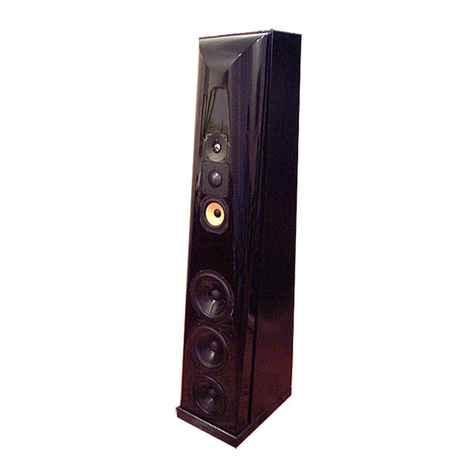
Thiel
Thiel Coherent Source CS.5 Manual
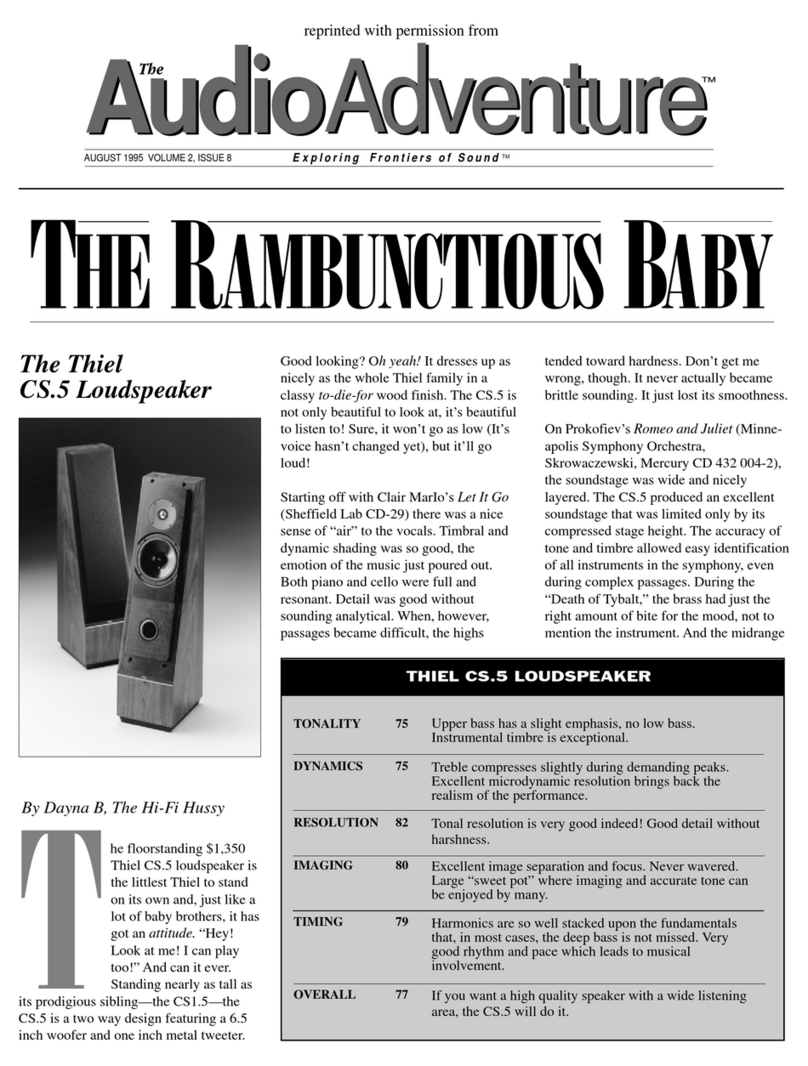
Thiel
Thiel CS.5 Dimensions
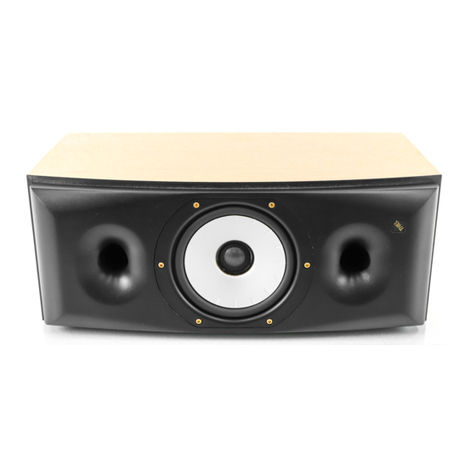
Thiel
Thiel Coherent Source SCS3 Manual

Thiel
Thiel CS2.3 Dimensions

Thiel
Thiel CS.5 Dimensions
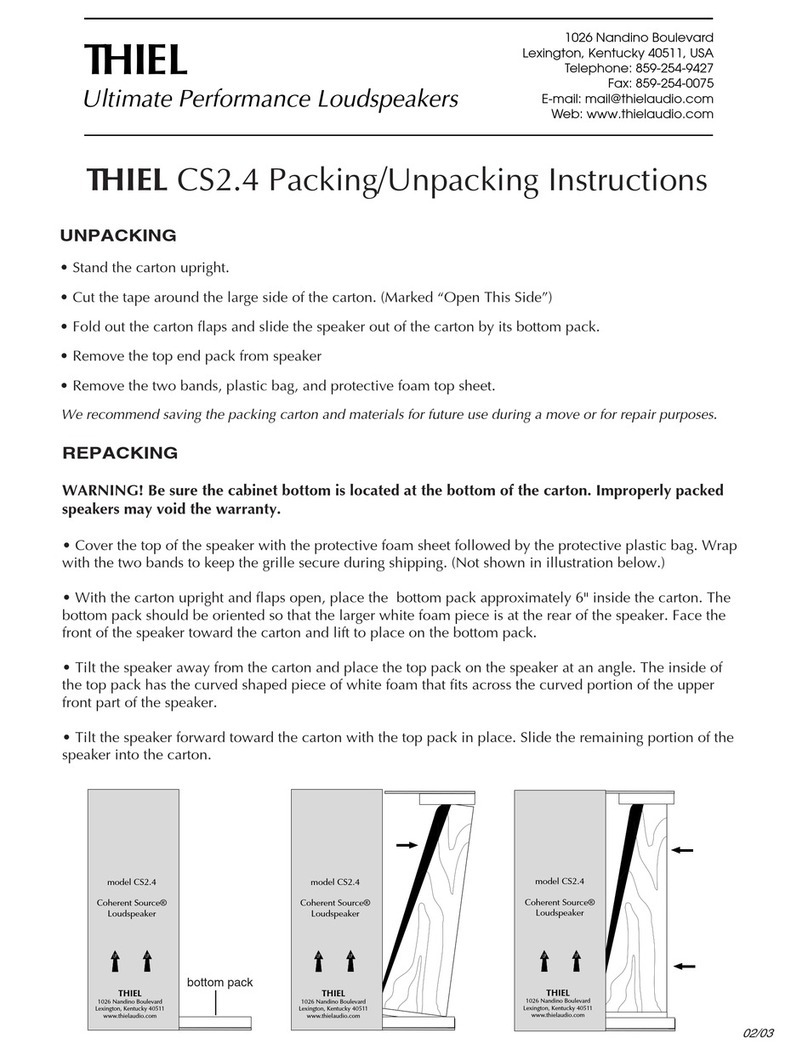
Thiel
Thiel CS2.4 User manual
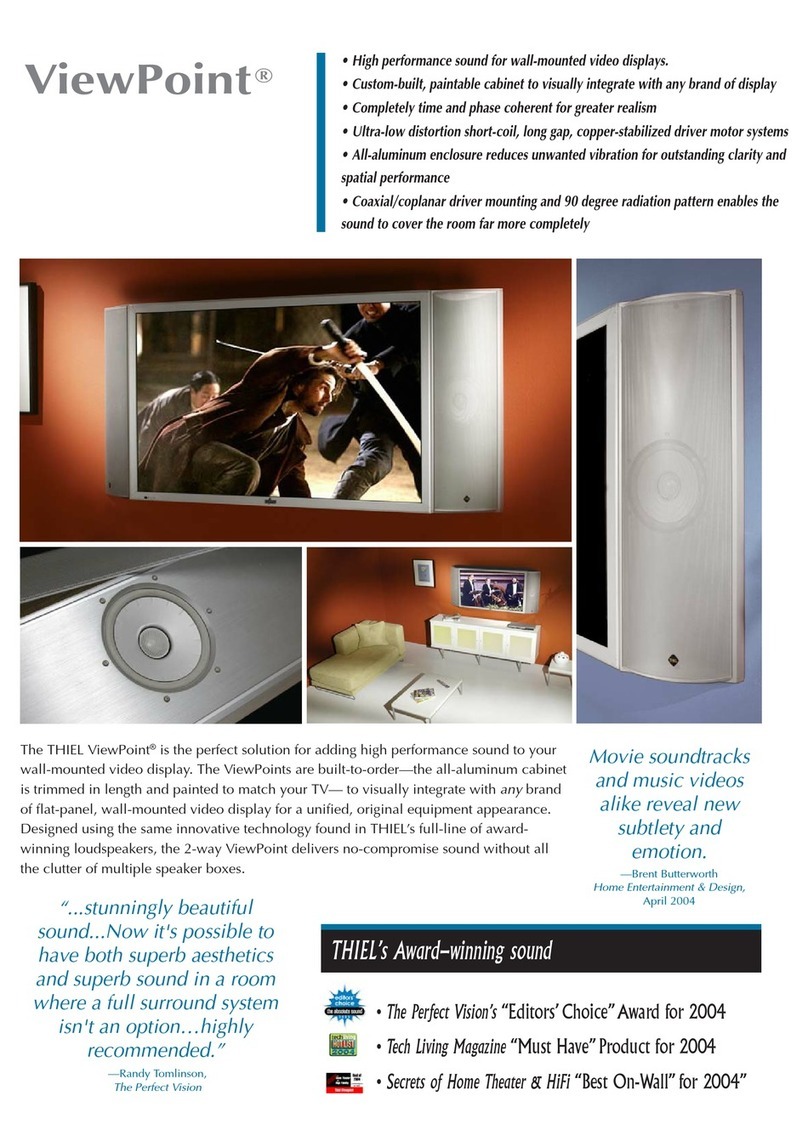
Thiel
Thiel ViewPoint User manual

Thiel
Thiel Coherent Source CS3.7 User manual
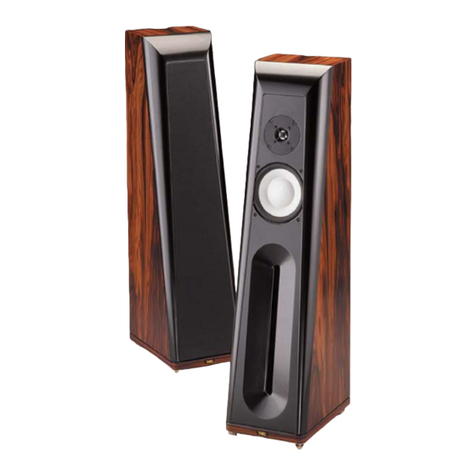
Thiel
Thiel CS1.6 User manual

Thiel
Thiel CS2.4 User manual

Thiel
Thiel SCS4T Technical manual
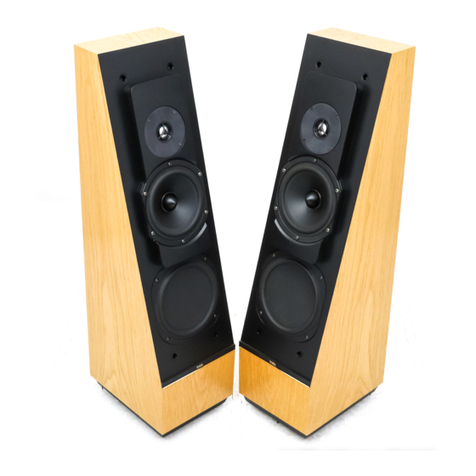
Thiel
Thiel CS1.5 User manual
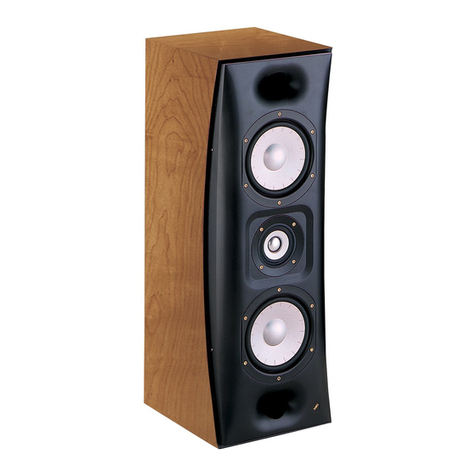
Thiel
Thiel MCS1 Manual
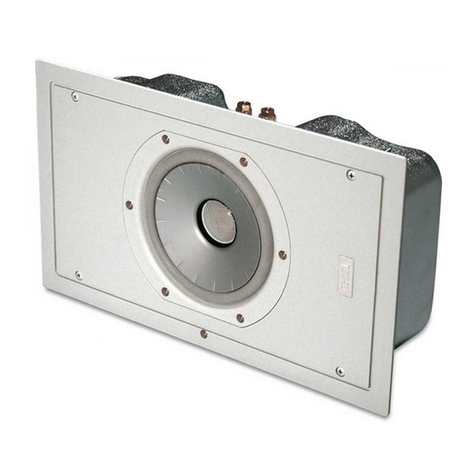
Thiel
Thiel 1.2 Coherent Technical manual
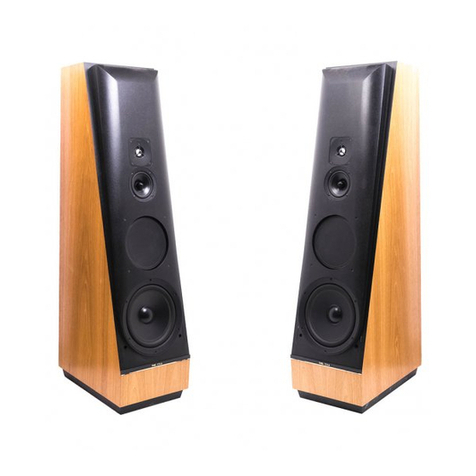
Thiel
Thiel CS3.6 User manual
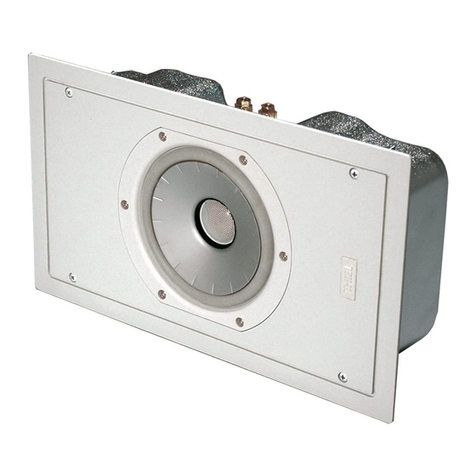
Thiel
Thiel PowerPlane 1.2 User manual
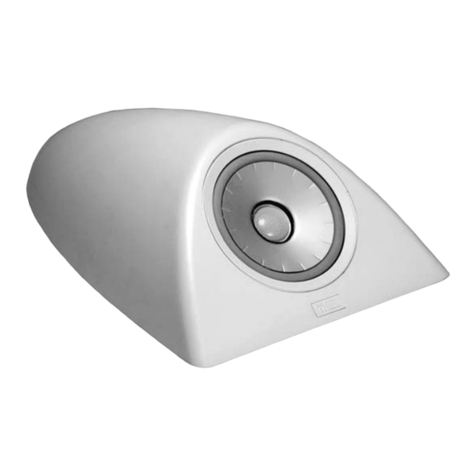
Thiel
Thiel PowerPoint 1.2 User manual

Thiel
Thiel DewPoint Technical manual

Thiel
Thiel Coherent Source CS3.7 Dimensions

Thiel
Thiel CS1.5 Manual



